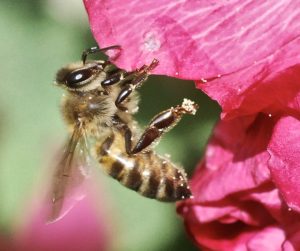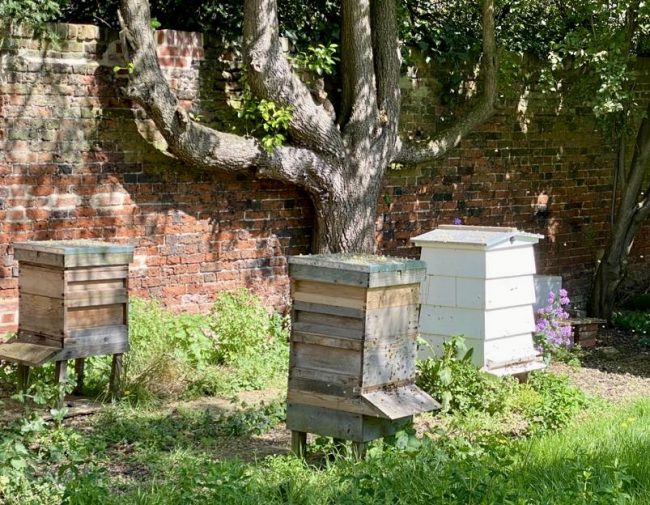Friend or foe ?

Honey bees face many threats - such viruses, mites and pesticides, but also threats from their own kind - robber bees. When nectar becomes scarce at the end of the summer and into autumn, then bees will seek food wherever they can find it - like honey from other colonies. From the robber bees ‘point of view’, this is simply another form of foraging behaviour. This robbing of honey deprives a colony of an important winter resource.
To limit this behaviour, hives have guard or gatekeeper bees, who ‘inspect’ all arriving bees. But how do they know who is friend and who is foe? Not being able to tell the difference could mean a long and lean winter, with little honey in the hive. Honey bees can recognise members of their community / hive by detecting waxy chemicals present in their exoskeleton (cuticle) known as cuticular hydrocarbons (CHC’s).
Interestingly, the CHC’s that a bee possesses is a function of its microbiome. The microbiome is the community of micro-organisms present in the gut. The bees in any given hive have a broadly similar microbiome, as a result of living together and sharing the same food sources so their ‘smell’ is similar. It is this distinctive ‘smell’ that enables the guard bees to sense who does not belong to the hive.

The importance of the microbiome is now the subject of intense investigation. Gut microbes are now recognised as being important in providing vitamins, helping digest food, regulating inflammation and keeping disease causing organisms in check - not only in humans, but many other animals.
Comments are closed for this post.
